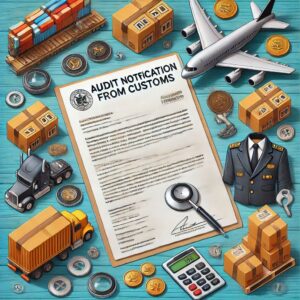Shipping from Russia plays a pivotal role in the global shipping industry, serving as the lifeblood of international trade by connecting distant nations and economies through vast maritime networks. In this blog post, we embark on a journey exploring the logistics and intricacies involved in shipping goods from Russia to the Philippines. As two geographically distant yet economically connected countries, understanding the processes, challenges, and solutions in this shipping route sheds light on the complexities of global trade.
Shipping goods internationally can be a complex process, with various factors to consider such as costs, regulations, and logistics. This blog post aims to provide a comprehensive guide on shipping from Russia to the Philippines.
Philippines and Russia Trade
The trade relations between Russia and the Philippines have been evolving, with both countries engaging in the exchange of various goods. In 2022, Russia exported goods worth $576 million to the Philippines, with the main products being Semi-Finished Iron ($349M), Refined Petroleum ($106M), and Coal Briquettes ($35.4M)1. Over the past 26 years, the exports from Russia to the Philippines have grown at an annualized rate of 3.71%1.
On the other hand, the Philippines exported goods valued at $53.9 million to Russia, including Coconuts, Brazil Nuts, and Cashews ($15M), Vegetable Saps ($9.2M), and Office Machine Parts ($3.22M)1. The exports from the Philippines to Russia have also seen an increase at an annualized rate of 3.89% over the same period1.
The economic cooperation between the two countries has been making strides, with total trade doubling from USD 486.3 million to USD 862.8 million in 2020, positioning Russia as the Philippines’ 19th trading partner out of 224 countries2. This relationship is expected to boost Philippine exports of car parts, and processed, and frozen food items to Russia3.
Subscribe to the Ex-works24/7 newsletter
Commodity: Shipping from Russia to Philippines
Here’s a brief overview of the trade between Russia and the Philippines:
Russia’s Exports to the Philippines:
- Semi-Finished Iron: $349M
- Refined Petroleum: $106M
- Coal Briquettes: $35.4M
These are the top products exported by Russia to the Philippines, contributing to a growing trade relationship1.
Potential Exports of the Philippines to Russia:
- Edible Fruits and Nuts: Including coconuts, which are in high demand.
- Vegetable Saps and Extracts: Used in various industries.
- Office Machine Parts: Reflecting the Philippines’ strong electronics sector.
The Philippines has a diverse range of products that have potential in the Russian market, including agricultural products like fruits, coconuts, cacao, nuts, vegetables, and fish2. The trade relationship is expected to grow, with the Philippines looking to boost exports of car parts, and processed, and frozen food items to Russia3.

Shipping goods internationally can be a complex process, with various factors to consider such as costs, regulations, and logistics. This blog post aims to provide a comprehensive guide on shipping from Russia to the Philippines.
Service: Shipping from Russia to Philippines
There are several shipping services available for transporting goods from Russia to the Philippines1. These include:
- Express Document: Starting from €54.30 + VAT, this service is ideal for shipping important documents quickly.
- Package: Starting from €78.44 + VAT, this service is suitable for sending packages.
- Van Service, LTL, FTL, and Air Freight: These services are available on request and are ideal for larger shipments.
The Shipping costs
The cost of shipping from Russia to the Philippines can vary depending on the type of service chosen, the weight and dimensions of the package, and the specific logistics provider1. It’s always a good idea to get a quote from multiple providers to ensure you’re getting the best deal.
The Shipping Regulation
Customs Duty and Required Documents
Unless you’re a diplomat, all of your household goods and personal effects are subject to customs duty, which is around 30% of the shipment’s value (assessed by a customs official)3. The required shipping documents will depend on the route and local customs regulations for what you decide to send1. Some of the most common documents required when shipping from Russia to the Philippines are the shipping label, the original invoice(s) of the item(s), the proforma invoice, and a customs declaration1.
Shipping Docs and Track Your Shipment
If you’re a business, consider setting up a business account with your chosen shipping provider. This can offer additional benefits and make managing your logistics more efficient1. Remember, every product being shipped into the Philippines requires a certain form, including a Bill of Lading or Air Waybill, Commercial Invoice, Packing List, and often a Customs Import Declaration4. Most shipping services offer real-time tracking, allowing you to monitor the status of your shipment from pickup to delivery.
In conclusion, shipping from Russia to the Philippines can be a smooth process with the right knowledge and preparation. Always ensure to check the latest regulations and requirements before shipping to avoid any potential issues. Happy shipping!
Frequently
Asked Questions
There are several options for shipping goods from Russia to the Philippines:
Air Freight: This is the fastest and most expensive option. Major international air cargo carriers like Aeroflot, Qatar Airways, or Emirates typically provide air freight services.
Sea Freight: This is a more economical choice for large or heavy shipments. The major seaports in Russia (e.g., Vladivostok, Saint Petersburg) have regular cargo connections to the Philippines, particularly through Manila or Cebu.
Courier Services: International courier services like DHL, UPS, or FedEx also offer shipping from Russia to the Philippines, but they tend to be more expensive and best suited for smaller parcels or documents.
Rail Freight (via Trans-Siberian Railway): For larger shipments, rail freight could be an option. However, it often requires further transport via truck or ship once it reaches China or other Asian countries.
Air Freight: Typically, 3–7 days depending on the service and customs clearance.
Sea Freight: Shipping by sea can take 20–45 days, depending on the specific route and port of origin/destination.
Courier Services: If using express courier services (e.g., FedEx, DHL), it may take around 5–10 business days, but this is usually for smaller shipments.
Rail Freight: If using rail combined with other transport methods, it can take around 30–60 days depending on the route.
Yes, there are customs duties and taxes when shipping from Russia to the Philippines. The Philippines imposes duties and VAT (Value Added Tax) on imports, which can vary based on the type of goods. Here's what to keep in mind:
Customs Duties: The duty rate is typically between 0% to 20%, depending on the product category. However, certain items like books or food may be exempt or have reduced rates.
VAT: The standard VAT rate for imported goods is 12%.
Exemptions: Some items, such as personal effects, may be exempt from customs duties if they meet the criteria set by Philippine customs.
It’s recommended to consult with a customs broker or logistics company to ensure that all paperwork and tariffs are handled properly.
Logistical Complexity: Shipping from Russia to the Philippines requires navigating multiple transit points, such as China or Southeast Asian countries, depending on the mode of transport. This can add complexity to both the shipping process and the cost.
Customs and Regulations: Understanding the exact duties, taxes, and regulations in both Russia and the Philippines can be complicated. Delays can occur due to incorrect documentation, especially with complex goods.
Currency Fluctuations: The exchange rates between the Russian Ruble and the Philippine Peso may affect the total cost of shipping. Fluctuations could impact freight rates, customs fees, and other charges.
Political or Economic Conditions: Geopolitical issues, sanctions, or changes in trade agreements between Russia and other countries could impact shipping logistics.
The required documents for shipping from Russia to the Philippines generally include:
Bill of Lading: For sea freight or air waybill for air shipments, detailing the origin and destination of the goods.
Commercial Invoice: This includes a detailed description of the goods, their value, and the payment terms.
Packing List: A detailed list of all items in the shipment, including weight, dimensions, and packaging.
Import Permit or Clearance: Certain products may require an import permit or clearance from Philippine authorities, particularly for regulated items like pharmaceuticals, food, and electronics.
Certificate of Origin: This document proves the country of origin of the goods and may be required for customs clearance and duty calculation.
Insurance Certificate (optional but recommended): If shipping high-value goods, an insurance certificate can provide coverage in case of loss or damage during transit.
Be sure to consult with a logistics provider or customs broker to ensure all documents are prepared accurately to avoid delays at customs.



